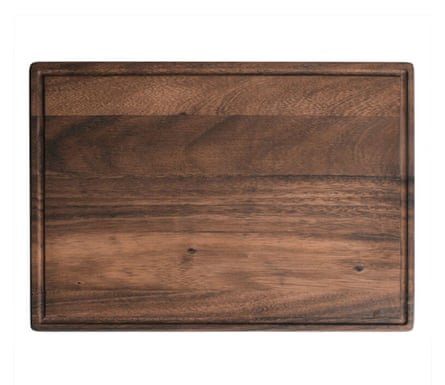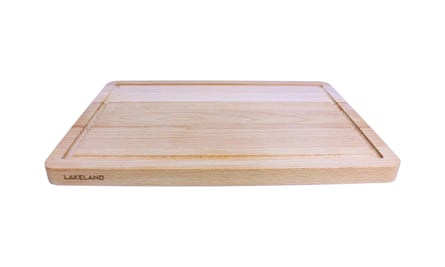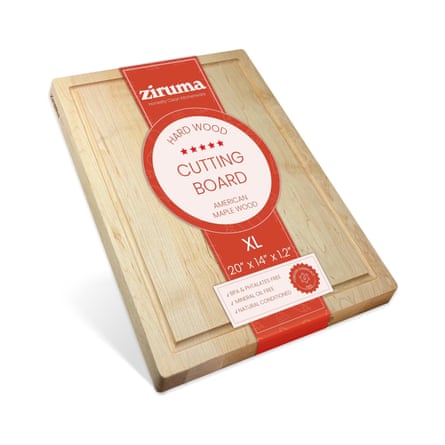You’ve rid your kitchen of plastic utensils and replaced them with olive wood chopping boards, beech spatulas and spoons. But there’s an art to taking care of these implements so that they stay in good shape and last as long as possible.
Here are the dos and don’ts – from an array of experts – for keeping your wooden utensils in peak condition, so that they’re a part of your kitchen for years to come.
How to care for wooden kitchen utensils
Know your wood
Always choose a hard-wearing wood that will stand up to kitchen use. “Hardwoods are usually best for boards and utensils: beech, maple and walnut,” says furniture-maker Chris Holland. “They have got a tight grain, which means less moisture and dirt can get in, and they resist deep knife marks better. Olive wood is another good choice – it’s beautiful, naturally oily, and resistant to staining – but it’s quite hard, so it can dull knives quicker. Ash is tough and light, but has a more open grain, so it needs regular oiling to keep moisture out.”

Walnut wood chopping board

Beech wood chopping board

Maple wood chopping board
Avoid the dishwasher
Whatever tree they come from, the first rule of looking after wooden kitchen items is probably the most frequently broken. “Don’t put them in the dishwasher,” says Holland. “It will strip off any protective treatment straight away.” The water temperature in a dishwasher rises to a point where it’s in effect steaming the wood. The result, Holland says, is that the wood expands, with any protective oils in the fibres washed away.
To clean chopping boards, spoons, spatulas and so on, simply hand-wash in warm water with a gentle washing-up liquid. Avoid scrubbing too hard with a scourer and don’t use abrasive cleaning products. Dry off any excess water immediately with a tea towel.
For an extra clean, says Jo Hadlow-Davies of Pembrokeshire-based Edge Handcrafted Tables and Furniture: “Rub a slice of lemon over a chopping board that has been used for something with a strong flavour, such as onions, to get rid of those odours before washing.”
Store well
Leave chopping boards on their long edge to avoid warping, and allow them to dry fully before you reuse. For utensils, stand them up in a pot to dry, and make sure there is no part left sitting in water.
Nourish and protect
Wooden utensils can become tired and fluffy after a while, with the wood fibres catching on your tea towels, for example. When this happens – or, preferably, before it does – use a treatment to nourish and protect it.
Anything you put on the wood must be food-safe, and you don’t want it to alter the flavour of your food. “You can use olive oil [now and then], but you should only do this with items that you use and wash every day,” says Hadlow-Davies. If not, you could end up with a board that starts to go rancid.
For less frequently used items, a longer-lasting treatment is better. All the treatments below are suitable for all woods (though you may want to test on a small area to check if it will affect the colour). You can repeat whenever necessary – once a month should be sufficient, but if you use items often or they start to look a little dry, you can always increase the frequency.
“Whatever [treatment] you use, washing will wear it away over time, so the only way to keep the wood properly protected is to reapply it,” says Holland. “A light sand and re-oil every so often will keep it looking good and lasting longer.”

Assorted sandpaper sheets
Pure oils
Linseed oil is a natural, non-toxic treatment tha’s good on any wood, says Mark Finney, of Finney’s Wood Finishes in Chesterfield. Tung oil is often recommended for oak but, again, can be used on any wood. Both are frequently used on kitchen worktops. They’re applied with a brush or lint-free cloth to chopping boards, spoons and spatulas, wooden knife handles, and any other utensils that need protecting.

Lint-free cloths

Synthetic mix bristle flat brush
These pure oils tend to be slow drying, though – linseed can take two to four days and tung oil at least four. Finney says purpose-made products, while retaining the qualities of the pure raw oils, can be easier to use. Danish oil is a good alternative, he says: use a clean, lint-free soft cloth or brush to coat the wood liberally with the oil, then wipe off the excess after a few minutes.
after newsletter promotion

Raw linseed oil

Tung oil

Danish oil
Mineral oils
There’s a wide variety of food-safe mineral oils on the market, and they all do broadly the same thing: nourish, protect and create water resistance.
Holland recommends Chestnut’s food-safe oil: “It soaks into the wood, slows down moisture getting in, and helps reduce staining,” he says. Apply the oil directly to the wood with a clean cloth or brush and leave to dry between coats – it should take about two hours. The manufacturers recommend up to three coats, but you should stop applications when the oil no longer soaks into the surface, as this means it has absorbed as much as it can. Wipe off any surplus with a clean cloth.
Finney recommends German wood-finish company Osmo’s range of oils for chopping boards, surfaces and utensils. It suits all woods and can even be used on children’s toys. Apply thinly using a brush or lint-free cloth – this one will dry overnight, in eight to 10 hours.

Osmo top oil

Chestnut food-safe oil

Food-safe wood oil
Waxes
Instead of food-grade mineral oil, which is a byproduct of the petrol industry, there are plenty of natural alternatives, such as beeswax and oils sourced in the UK. Use a soft cloth to work the wax into the wood in circular motions.

Beeswax board wax
Repurpose, recycle, replace
When wooden kitchen items reach the end of their natural lives, they should go to your local household waste recycling centre, be repurposed for arts and crafts (think googly eyes on wooden spoon dolls), or even used in the garden (check out this ingenious idea for a trellis made from wooden spoons). But how do you know when it’s time to let go?
“If cracks or splits stop you from cleaning the surface properly, then it’s time to replace it,” says Holland. “Dirt and bacteria can get trapped, and no amount of oiling will solve that. The same goes if it’s warped or feels like it might break in use.”
Sandra Haurant is a journalist who has been writing for the Guardian for more than two decades. One of her favourite things is speaking to experts with a real passion for what they do, and pouring their knowledge into articles. Another of her favourite things is her dog, who has long hoped she will pitch a piece on pet spas

 2 months ago
66
2 months ago
66

















































